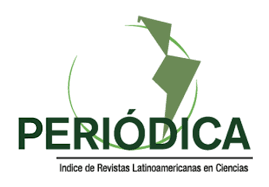Biotechnological and bio-industrial applications of alpha–L-Rhamnosidase enzyme
DOI:
https://doi.org/10.33571/rpolitec.v21n41a3Keywords:
alpha–L-Rhamnosidase, food industry, Chemical industry, Pharmacceutical industryAbstract
α -L-rhamnosidase is an important biotechnology enzyme that is used in various foods, chemicals and pharmaceutical industries. The α-L-rhamnosidases (α- RHA) belong to a group of glycosyl hydrolases having biotechnological potential in the proesses occurring in industries, they stimulate the breakdown of terminal residues of α-L-rhamnose from many naturally occurring substances present in chemical industries. Flavonoid prunin is produced from Narignine by activity of α-L-rhamnosidase. It has anti-inflammatory and anti-viral activity against DNA or RNA viruses. It can be acquired from plants, animals and different microbial sources, such as (bacteria and yeast). Main sources of α-L-rhamnosidase are microbes, mainly filamentous fungi such as Aspergillus, Circinella, Eurotium, Fusarium, Penicillium, Rhizopus, and Trichoderma. The first bacterium α-L-rhamnosidase was screened from the genus Bacteroides. The other strains of bacteria that produce α-L-rhamnosidases are the heat-loving bacteria, Fusabacterium, Pseudoalteromonas, Ralstonia pickettii, Lactobacillus acidophilus, Pediococcus acidilactici, Clostridium stercorarium, and Sphingomonas paucimobis. Yeast rhymosidase is very important because it is produced in short fermentation, with increased shelf life, high thermal stability, the ability to retain flavor of juice and it is non-toxic for human consumption. For α-L-rhamnosidase purification, the centrifuge method is used, and various chemical products, such as ammonium sulphate, NaCl, are used. Finally, molecular weight (MW) of α-L-rhamnosidase has been determined by Gel Filtration Chromatography (GFC) and Sodium Dodecyl Sulfate Polyacrylamide Gel Electrophoresis (SDS-PAGE).
Article Metrics
Abstract: 311 PDF (Español (España)): 115PlumX metrics
References
[1]. Yadav, V., et al., α-L-Rhamnosidase: a review. Process Biochemistry, 2010. 45(8): p. 1226-1235. DOI: https://doi.org/10.1016/j.procbio.2010.05.025
[2]. Magario, I., et al., Deactivation Kinetics and Response Surface Analysis of the Stability of α-l-Rhamnosidase from Penicillium decumbens. Applied biochemistry and biotechnology, 2009. 152(1): p. 29-41. DOI: https://doi.org/10.1007/s12010-008-8204-5
[3]. Kurosawa, Y., K. IKEDA, and F. EGAMI, α-L-Rhamnosidases of the liver of Turbo cornutus and Aspergillus niger. The Journal of Biochemistry, 1973. 73(1): p. 31-37.
[4]. Manzanares, P., L.H. de Graaff, and J. Visser, Purification and characterization of an α-L-rhamnosidase from Aspergillus niger. FEMS Microbiology Letters, 1997. 157(2): p. 279-283. DOI: https://doi.org/10.1016/S0378-1097(97)00487-4
[5]. Spagna, G., et al., A simple method for purifying glycosidases: α-L-rhamnopyranosidase from Aspergillus niger to increase the aroma of Moscato wine. Enzyme and Microbial Technology, 2000. 27(7): p. 522-530. DOI: https://doi.org/10.1016/S0141-0229(00)00236-2
[6]. Puri, M., Updates on naringinase: structural and biotechnological aspects. Applied microbiology and biotechnology, 2012. 93(1): p. 49-60. DOI: https://doi.org/10.1007/s00253-011-3679-3
[7]. Pel, H.J., et al., Genome sequencing and analysis of the versatile cell factory Aspergillus niger CBS 513.88. Nature biotechnology, 2007. 25(2): p. 221-231. DOI: https://doi.org/10.1038/nbt1282
[8]. Puri, M. and U.C. Banerjee, Production, purification, and characterization of the debittering enzyme naringinase. Biotechnology Advances, 2000. 18(3): p. 207-217. DOI: https://doi.org/10.1016/S0734-9750(00)00034-3
[9]. Hashimoto, W., et al., Characterization of α-L-rhamnosidase of Bacillus sp. GL1 responsible for the complete depolymerization of gellan. Archives of biochemistry and biophysics, 1999. 368(1): p. 56-60. DOI: https://doi.org/10.1006/abbi.1999.1279
[10]. Roitner, M., T. Schalkhammer, and F. Pittner, Characterisation of naringinase from Aspergillus niger. Monatshefte für Chemie/Chemical Monthly, 1984. 115(10): p. 1255-1267. DOI: https://doi.org/10.1007/BF00809356
[11]. Kaul, T.N., E. Middleton Jr, and P.L. Ogra, Antiviral effect of flavonoids on human viruses. Journal of medical virology, 1985. 15(1): p. 71-79. DOI: https://doi.org/10.1002/jmv.1890150110
[12]. Elujoba, A. and R. Hardman, Diosgenin production by acid and enzymatic hydrolysis of fenugreek. 1987.
[13]. Monti, D., et al., Generation of an α‐L‐rhamnosidase library and its application for the selective derhamnosylation of natural products. Biotechnology and bioengineering, 2004. 87(6): p. 763-771. DOI: https://doi.org/10.1002/bit.20187
[14]. Yu, H., et al., Purification and characterization of ginsenoside-α-L-rhamnosidase. Chemical and pharmaceutical bulletin, 2002. 50(2): p. 175-178. DOI: https://doi.org/10.1248/cpb.50.175
[15]. Busto, M., et al., Immobilization of naringinase from Aspergillus niger CECT 2088 in poly (vinyl alcohol) cryogels for the debittering of juices. Food chemistry, 2007. 104(3): p. 1177-1182. DOI: https://doi.org/10.1016/j.foodchem.2007.01.033
[16]. Prakash, S., R.S. Singhal, and P.R. Kulkarni, Enzymic debittering of Indian grapefruit (Citrus paradisi) juice. Journal of the Science of Food and Agriculture, 2002. 82(4): p. 394-397. DOI: https://doi.org/10.1002/jsfa.1059
[17]. TSEN, H.Y. and G.K. YU, Limonin and naringin removal from grapefruit juice with naringinase entrapped in cellulose triacetate fibers. Journal of food science, 1991. 56(1): p. 31-34. DOI: https://doi.org/10.1111/j.1365-2621.1991.tb07968.x
[18]. Chang, H.-Y., et al., Purification and characterisation of Aspergillus sojae naringinase: The production of prunin exhibiting markedly enhanced solubility with in vitro inhibition of HMG-CoA reductase. Food chemistry, 2011. 124(1): p. 234-241. DOI: https://doi.org/10.1016/j.foodchem.2010.06.024
[19]. González-Barrio, R., et al., Production of bioavailable flavonoid glucosides in fruit juices and green tea by use of fungal α-L-rhamnosidases. Journal of Agricultural and Food Chemistry, 2004. 52(20): p. 6136-6142. DOI: https://doi.org/10.1021/jf0490807
[20]. Avila, M., et al., Physiological and biochemical characterization of the two α-L-rhamnosidases of Lactobacillus plantarum NCC245. Microbiology, 2009. 155(8): p. 2739-2749. DOI: https://doi.org/10.1099/mic.0.027789-0
[21]. Beekwilder, J., et al., Characterization of rhamnosidases from Lactobacillus plantarum and Lactobacillus acidophilus. Applied and environmental microbiology, 2009. 75(11): p. 3447-3454. DOI: https://doi.org/10.1128/AEM.02675-08
[22]. Birgisson, H., et al., Two new thermostable α-L-rhamnosidases from a novel thermophilic bacterium. Enzyme and Microbial Technology, 2004. 34(6): p. 561-571. DOI: https://doi.org/10.1016/j.enzmictec.2003.12.012
[23]. Hashimoto, W., et al., Molecular identification of an α-L-rhamnosidase from Bacillus sp. strain GL1 as an enzyme involved in complete metabolism of gellan. Archives of biochemistry and biophysics, 2003. 415(2): p. 235-243. DOI: https://doi.org/10.1016/S0003-9861(03)00231-5
[24]. Manzanares, P., et al., Purification and Characterization of Two Different α-l-Rhamnosidases, RhaA and RhaB, from Aspergillus aculeatus. Applied and Environmental Microbiology, 2001. 67(5): p. 2230-2234. DOI: https://doi.org/10.1128/AEM.67.5.2230-2234.2001
[25]. Yadav, S., et al., Purification and functional characterisation of an α‐l‐rhamnosidase from Penicillium citrinum MTCC‐3565. International journal of food science & technology, 2012. 47(7): p. 1404-1410. DOI: https://doi.org/10.1111/j.1365-2621.2012.02987.x
[26]. Zverlov, V.V., et al., The thermostable α‐L‐rhamnosidase RamA of Clostridium stercorarium: biochemical characterization and primary structure of a bacterial α‐L‐rhamnoside hydrolase, a new type of inverting glycoside hydrolase. Molecular microbiology, 2000. 35(1): p. 173-179. DOI: https://doi.org/10.1046/j.1365-2958.2000.01691.x
[27]. Yanai, T. and M. Sato, Purification and characterization of an α-L-rhamnosidase from Pichia angusta X349. Bioscience, biotechnology, and biochemistry, 2000. 64(10): p. 2179-2185. DOI: https://doi.org/10.1271/bbb.64.2179
[28]. Miake, F., et al., Purification and characterization of intracellular α-L-rhamnosidase from Pseudomonas paucimobilis FP2001. Archives of microbiology, 2000. 173(1): p. 65-70. DOI: https://doi.org/10.1007/s002030050009
[29]. Demirjian, D.C., F. Morı́s-Varas, and C.S. Cassidy, Enzymes from extremophiles. Current opinion in chemical biology, 2001. 5(2): p. 144-151. DOI: https://doi.org/10.1016/S1367-5931(00)00183-6
[30]. Hough, D.W. and M.J. Danson, Extremozymes. Current opinion in chemical Biology, 1999. 3(1): p. 39-46. DOI: https://doi.org/10.1016/S1367-5931(99)80008-8
[31]. Yamashita, T., et al., New Polyhydroxylated Pyrrolidine, Piperidine, and Pyrrolizidine Alkaloids from Scilla s ibirica. Journal of natural products, 2002. 65(12): p. 1875-1881. DOI: https://doi.org/10.1021/np020296h
[32]. Jespersen, T.M., et al., Isofagomine, a potent, new glycosidase inhibitor. Angewandte Chemie International Edition in English, 1994. 33(17): p. 1778-1779. DOI: https://doi.org/10.1002/anie.199417781
[33]. Legler, G., Glycoside hydrolases: mechanistic information from studies with reversible and irreversible inhibitors, in Advances in carbohydrate chemistry and biochemistry. 1990, Elsevier. p. 319-384. DOI: https://doi.org/10.1016/S0065-2318(08)60034-7
[34]. Fowler, P.A., et al., Synthesis and activity towards yeast α-glucosidase of 1, 5-dideoxy-1, 5-imino-L-iditol (1-deoxy-L-idonojirimycin). Carbohydrate research, 1993. 246: p. 377-381. DOI: https://doi.org/10.1016/0008-6215(93)84050-G
[35]. Hashimoto, W. and K. Murata, α-L-Rhamnosidase of Sphingomonas sp. R1 producing an unusual exopolysaccharide of sphingan. Bioscience, biotechnology, and biochemistry, 1998. 62(6): p. 1068-1074. DOI: https://doi.org/10.1271/bbb.62.1068
[36]. Steinbacher, S., et al., Crystal structure of phage P22 tailspike protein complexed with Salmonella sp. O-antigen receptors. Proceedings of the National Academy of Sciences, 1996. 93(20): p. 10584-10588. DOI: https://doi.org/10.1073/pnas.93.20.10584
[37]. Griffiths, L. and A. Barrow, Metabolism of flavonoid compounds in germ-free rats. Biochemical Journal, 1972. 130(4): p. 1161-1162. DOI: https://doi.org/10.1042/bj1301161
[38]. Macdonald, I.A., J.A. Mader, and R.G. Bussard, The role of rutin and quercitrin in stimulating flavonol glycosidase activity by cultured cell-free microbial preparations of human feces and saliva. Mutation Research Letters, 1983. 122(2): p. 95-102. DOI: https://doi.org/10.1016/0165-7992(83)90044-1
[39]. Bokkenheuser, V.D., C. Shackleton, and J. Winter, Hydrolysis of dietary flavonoid glycosides by strains of intestinal Bacteroides from humans. Biochemical Journal, 1987. 248(3): p. 953-956. DOI: https://doi.org/10.1042/bj2480953
[40]. Jang, I.-S. and D.-H. Kim, Purification and characterization of α-L-rhamnosidase from Bacteroides JY-6, a human intestinal bacterium. Biological and Pharmaceutical Bulletin, 1996. 19(12): p. 1546-1549. DOI: https://doi.org/10.1248/bpb.19.1546
[41]. Miyata, T., et al., Cloning, sequence analysis, and expression of the gene encoding Sphingomonas paucimobilis FP2001 α-L-rhamnosidase. Current microbiology, 2005. 51(2): p. 105-109. DOI: https://doi.org/10.1007/s00284-005-4487-8
[42]. Cui, Z., et al., Crystal structure of glycoside hydrolase family 78 α-L-rhamnosidase from Bacillus sp. GL1. Journal of molecular biology, 2007. 374(2): p. 384-398. DOI: https://doi.org/10.1016/j.jmb.2007.09.003
[43]. Twerdochlib, A., et al., L-rhamnose metabolism in Pichia stipitis and Debaryomyces polymorphus. Canadian journal of microbiology, 1994. 40(11): p. 896-902. DOI: https://doi.org/10.1139/m94-144
[44]. Qian, S., et al., Purification and characterization of dioscin-α-L-rhamnosidase from pig liver. Chemical and pharmaceutical bulletin, 2005. 53(8): p. 911-914. DOI: https://doi.org/10.1248/cpb.53.911
[45]. Manzanares, P., et al., Purification and characterization of an α‐l‐rhamnosidase from Aspergillus nidulans. Letters in Applied Microbiology, 2000. 31(3): p. 198-202. DOI: https://doi.org/10.1046/j.1365-2672.2000.00788.x
[46]. Thomas, D., C. Smythe, and M. Labbee, ENZYMATIC HYDROLYSIS OF NARINGIN, THE BITTER PRINCIPLE OF GRAPEFRUIT a. Journal of Food Science, 1958. 23(6): p. 591-598. DOI: https://doi.org/10.1111/j.1365-2621.1958.tb17609.x
[47]. Suzuki, H., Hydrolysis of flavonoid glycosides by enzymes (Rhamnodiastase) from Rhamnus and other sources. Archives of Biochemistry and Biophysics, 1962. 99(3): p. 476-483. DOI: https://doi.org/10.1016/0003-9861(62)90296-5
[48]. Bourbouze, R., F. Percheron, and J.E. Courtois, α‐L‐Rhamnosidase de Fagopyrum esculentum: Purification et quelques proprietes. European journal of biochemistry, 1976. 63(2): p. 331-337. DOI: https://doi.org/10.1111/j.1432-1033.1976.tb10234.x
[49]. Scaroni, E., et al., Hydrolytic properties of crude α‐L‐rhamnosidases produced by several wild strains of mesophilic fungi. Letters in applied microbiology, 2002. 34(6): p. 461-465. DOI: https://doi.org/10.1046/j.1472-765X.2002.01115.x
[50]. Custodio, M.V.G., et al., Production and characterization of an Aspergillus terreus α-l-rhamnosidase of oenological interest. Zeitschrift für Lebensmittel-Untersuchung und Forschung, 1996. 203(6): p. 522-527. DOI: https://doi.org/10.1007/BF01193157
[51]. Manzanares, P., et al., Construction of a genetically modified wine yeast strain expressing the Aspergillus aculeatus rhaA gene, encoding an α-L-rhamnosidase of enological interest. Applied and Environmental Microbiology, 2003. 69(12): p. 7558-7562. DOI: https://doi.org/10.1128/AEM.69.12.7558-7562.2003
[52]. Orejas, M., E. Ibáñez, and D. Ramón, The filamentous fungus Aspergillus nidulans produces an α‐L‐rhamnosidase of potential oenological interest. Letters in applied microbiology, 1999. 28(5): p. 383-388. DOI: https://doi.org/10.1046/j.1365-2672.1999.00539.x
[53]. Singh, P., et al., Optimization, production and scale up of debittered kinnow beverage by α-L-rhamnosidase producing yeast. Emirates Journal of Food and Agriculture, 2015: p. 548-555. DOI: https://doi.org/10.9755/ejfa.184383
[54]. Kim, J.-H. and D.-H. Kim, Purification and characterization of quercitrin-hydrolyzing α-l-rhamnosidase from Fusobacterium K-60, a human intestinal bacterium. Journal of microbiology and biotechnology, 2005. 15(3): p. 519-524.
[55]. Orrillo, A.G., et al., Cold-active α-L-rhamnosidase from psychrotolerant bacteria isolated from a sub-Antarctic ecosystem. Enzyme and microbial technology, 2007. 40(2): p. 236-241. DOI: https://doi.org/10.1016/j.enzmictec.2006.04.002
[56]. Michlmayr, H., et al., Heterologously expressed family 51 α-L-arabinofuranosidases from Oenococcus oeni and Lactobacillus brevis. Applied and environmental microbiology, 2011. 77(4): p. 1528-1531. DOI: https://doi.org/10.1128/AEM.01385-10
[57]. Fujimoto, Z., et al., The structure of a Streptomyces avermitilis α-L-rhamnosidase reveals a novel carbohydrate-binding module CBM67 within the six-domain arrangement. Journal of Biological Chemistry, 2013. 288(17): p. 12376-12385. DOI: https://doi.org/10.1074/jbc.M113.460097
[58]. Yadav, V., et al., α‐l‐Rhamnosidase from Aspergillus flavus MTCC‐9606 isolated from lemon fruit peel. International journal of food science & technology, 2011. 46(2): p. 350-357. DOI: https://doi.org/10.1111/j.1365-2621.2010.02498.x
[59]. Caldini, C., et al., Kinetic and immobilization studies on fungal glycosidases for aroma enhancement in wine. Enzyme and Microbial Technology, 1994. 16(4): p. 286-291. DOI: https://doi.org/10.1016/0141-0229(94)90168-6
[60]. Puri, M., et al., Molecular characterization and enzymatic hydrolysis of naringin extracted from kinnow peel waste. International journal of biological macromolecules, 2011. 48(1): p. 58-62. DOI: https://doi.org/10.1016/j.ijbiomac.2010.09.012
[61]. Gerstorferová, D., et al., Recombinant α-L-rhamnosidase from Aspergillus terreus in selective trimming of rutin. Process Biochemistry, 2012. 47(5): p. 828-835. DOI: https://doi.org/10.1016/j.procbio.2012.02.014
[62]. Zajkoska, P., M. Rebroš, and M. Rosenberg, Biocatalysis with immobilized Escherichia coli. Applied microbiology and biotechnology, 2013. 97(4): p. 1441-1455. DOI: https://doi.org/10.1007/s00253-012-4651-6
[63]. Manzanares, P., et al., α-L-Rhamnosidases: old and new insights, in Industrial enzymes. 2007, Springer. p. 117-140. DOI: https://doi.org/10.1007/1-4020-5377-0_8
[64]. Habelt, K. and F. Pittner, A rapid method for the determination of naringin, prunin, and naringenin applied to the assay of naringinase. Analytical biochemistry, 1983. 134(2): p. 393-397. DOI: https://doi.org/10.1016/0003-2697(83)90314-7
[65]. Rojas, N.L., et al., Purification and characterization of a novel alkaline α-L-rhamnosidase produced by Acrostalagmus luteo albus. Journal of industrial microbiology & biotechnology, 2011. 38(9): p. 1515-1525. DOI: https://doi.org/10.1007/s10295-010-0938-8
[66]. Kaur, A., et al., Hydrolysis of citrus peel naringin by recombinant α‐L‐rhamnosidase from Clostridium stercorarium. Journal of Chemical Technology & Biotechnology, 2010. 85(10): p. 1419-1422. DOI: https://doi.org/10.1002/jctb.2433
[67]. Bourbouze, R., F. Pratviel-Sosa, and F. Percheron, Rhamnodiastase et α-L-rhamnosidase de Fagopyrum esculentum. Phytochemistry, 1975. 14(5-6): p. 1279-1282. DOI: https://doi.org/10.1016/S0031-9422(00)98610-2
[68]. Grimaldi, A., E. Bartowsky, and V. Jiranek, A survey of glycosidase activities of commercial wine strains of Oenococcus oeni. International journal of food microbiology, 2005. 105(2): p. 233-244. DOI: https://doi.org/10.1016/j.ijfoodmicro.2005.04.011
[69]. Bonanno, J.B., et al., New York-Structural GenomiX Research Consortium (NYSGXRC): a large scale center for the protein structure initiative. Journal of Structural and Functional Genomics, 2005. 6(2-3): p. 225-232.
[70]. Notomista, E., et al., The marine isolate Novosphingobium sp. PP1Y shows specific adaptation to use the aromatic fraction of fuels as the sole carbon and energy source. Microbial ecology, 2011. 61(3): p. 582-594. DOI: https://doi.org/10.1007/s00248-010-9786-3
[71]. D'Argenio, V., et al., De novo sequencing and assembly of the whole genome of Novosphingobium sp. strain PP1Y. 2011, Am Soc Microbiol. DOI: https://doi.org/10.1128/JB.05349-11
[72]. Hall, D.H., A new enzyme of the glycosidase type. Nature, 1938. 142(3586): p. 150-150. DOI: https://doi.org/10.1038/142150a0
[73]. Kaji, A. and T. Ichimi, α-L-Rhamnosidase activity in culture filtrate of Corticium rolfsii enzymic activity at low pH. Agricultural and Biological Chemistry, 1973. 37(2): p. 431-432. DOI: https://doi.org/10.1080/00021369.1973.10860686
[74]. Young, N.M., R.A. Johnston, and J.C. Richards, Purification of the α-L-rhamnosidase of Penicillium decumbens and characterisation of two glycopeptide components. Carbohydrate research, 1989. 191(1): p. 53-62. DOI: https://doi.org/10.1016/0008-6215(89)85045-1
[75]. Koseki, T., et al., Characterization of an α-L-rhamnosidase from Aspergillus kawachii and its gene. Applied microbiology and biotechnology, 2008. 80(6): p. 1007. DOI: https://doi.org/10.1007/s00253-008-1599-7
[76]. Shanmugam, V. and K. Yadav, Extracellular production of alpha-rhamnosidase by Rhizopus nigricans. Indian journal of experimental biology, 1995. 33(9): p. 705-707.
[77]. Puri, M., A. Banerjee, and U. Banerjee, Optimization of process parameters for the production of naringinase by Aspergillus niger MTCC 1344. Process Biochemistry, 2005. 40(1): p. 195-201. DOI: https://doi.org/10.1016/j.procbio.2003.12.009
[78]. Mamma, D., et al., Biochemical characterization of the multi-enzyme system produced by Penicillium decumbens grown on rutin. Food Biotechnology, 2004. 18(1): p. 1-18. DOI: https://doi.org/10.1081/FBT-120030382
[79]. Thammawat, K., et al., Isolation, preliminary enzyme characterization and optimization of culture parameters for production of naringinase isolated from Aspergillus niger BCC 25166. Agriculture and Natural Resources, 2008. 42(1): p. 61-72.
[80]. Rajal, V.B., et al., Production, partial purification and characterization of α-L-rhamnosidase from Penicillium ulaiense. World journal of microbiology and biotechnology, 2009. 25(6): p. 1025-1033. DOI: https://doi.org/10.1007/s11274-009-9979-4
[81]. Yadav, S., S. Yadava, and K. Yadav, Purification and characterization of α-L-rhamnosidase from Penicillium corylopholum MTCC-2011. Process Biochemistry, 2013. 48(9): p. 1348-1354. DOI: https://doi.org/10.1016/j.procbio.2013.05.001
[82]. Chisti, Y., Bioseparation and Bioprocessing: A Handbook - G. Subramanian, editor, Wiley-VCH, New York, 1998 Volume 2 (xviii+ 474 pages) ISBN 3 527 28876 7. Biotechnology Advances, 1999. 17(7): p. 599-601. DOI: https://doi.org/10.1016/S0734-9750(99)00011-7
[83]. Nomura, D., Studies on naringinase produced by Coniothyrium diplodiella. I. The properties of naringinase and the removal of co-existing pectinase from the enzyme preparation. Enzymologia, 1965. 29(3): p. 272.
[84]. Vila-Real, H., et al., Enzymatic synthesis of the flavone glucosides, prunin and isoquercetin, and the aglycones, naringenin and quercetin, with selective-l-rhamnosidase and-d-glucosidase activities of naringinase. Enzyme research, 2011. 2011. DOI: https://doi.org/10.4061/2011/692618
[85]. Rivas, J.J.N. and A.E.B. Zamora, El complejo agroindustrial limonero de la provincia de Tucumán (Argentina). Ejemplo de producciones no tradicionales y de desaparición de los pequeños productores. Boletín de la Asociación de Geógrafos Españoles, 2010.
[86]. Illanes, A., et al., Recent trends in biocatalysis engineering. Bioresource technology, 2012. 115: p. 48-57. DOI: https://doi.org/10.1016/j.biortech.2011.12.050
[87]. Fritz, I., et al., Brevundimonas mediterranea sp. nov., a non-stalked species from the Mediterranean Sea. International journal of systematic and evolutionary microbiology, 2005. 55(1): p. 479-486. DOI: https://doi.org/10.1099/ijs.0.02852-0
[88]. Puri, M., et al., Biochemical basis of bitterness in citrus fruit juices and biotech approaches for debittering. Critical reviews in biotechnology, 1996. 16(2): p. 145-155. DOI: https://doi.org/10.3109/07388559609147419
[89]. Williams, P.J., et al., Novel monoterpene disaccharide glycosides of Vitis vinifera grapes and wines. Phytochemistry, 1982. 21(8): p. 2013-2020. DOI: https://doi.org/10.1016/0031-9422(82)83034-3
[90]. Nielsen, I.L.F., et al., Bioavailability is improved by enzymatic modification of the citrus flavonoid hesperidin in humans: a randomized, double-blind, crossover trial. The Journal of nutrition, 2006. 136(2): p. 404-408. DOI: https://doi.org/10.1093/jn/136.2.404
[91]. Kalu, D., et al., A comparative study of the actions of tamoxifen, estrogen and progesterone in the ovariectomized rat. Bone and mineral, 1991. 15(2): p. 109-123. DOI: https://doi.org/10.1016/0169-6009(91)90002-H
[92]. Park, Y.B., et al., Interactive effect of hesperidin and vitamin E supplements on cholesterol metabolism in high cholesterol-fed rats. International Journal for Vitamin and Nutrition Research, 2001. 71(1): p. 36-44. DOI: https://doi.org/10.1024/0300-9831.71.1.36
[93]. Miyake, Y., et al., Protective effects of lemon flavonoids on oxidative stress in diabetic rats. Lipids, 1998. 33(7): p. 689. DOI: https://doi.org/10.1007/s11745-998-0258-y
[94]. Ohtsuki, K., et al., Effects of long-term administration of hesperidin and glucosyl hesperidin to spontaneously hypertensive rats. Journal of nutritional science and vitaminology, 2002. 48(5): p. 420-422. DOI: https://doi.org/10.3177/jnsv.48.420
[95]. Tanaka, T., et al., Suppression of azoxymethane‐induced colon carcinogenesis in male F344 rats by mandarin juices rich in β‐cryptoxanthin and hesperidin. International Journal of Cancer, 2000. 88(1): p. 146-150. DOI: https://doi.org/10.1002/1097-0215(20001001)88:1<146::AID-IJC23>3.0.CO;2-I
[96]. Guardia, T., et al., Anti-inflammatory properties of plant flavonoids. Effects of rutin, quercetin and hesperidin on adjuvant arthritis in rat. Il farmaco, 2001. 56(9): p. 683-687. DOI: https://doi.org/10.1016/S0014-827X(01)01111-9
[97]. Gray, G.M. and A.C. Olson, Hydrolysis of high levels of naringin in grapefruit juice using a hollow fiber naringinase reactor. Journal of Agricultural and Food Chemistry, 1981. 29(6): p. 1298-1301. DOI: https://doi.org/10.1021/jf00108a051
[98]. Manjon, A., et al., Immobilization of naringinase on glycophase-coated porous glass. Biotechnology letters, 1985. 7(7): p. 477-482. DOI: https://doi.org/10.1007/BF01199862
[99]. Puri, M., et al., Immobilized enzyme technology for debittering citrus fruit juices. Food enzymes: Application of new technologies, 2008: p. 91-103.
[100]. Cheetham, P.S. and M.A. Quail, Process for preparing L-rhamnose. 1991, Google Patents.
[101]. Hollman, P.C., et al., The sugar moiety is a major determinant of the absorption of dietary flavonoid glycosides in man. Free radical research, 1999. 31(6): p. 569-573. DOI: https://doi.org/10.1080/10715769900301141
[102]. Martínez Conesa, C., et al., Treatment of metastatic melanoma B16F10 by the flavonoids tangeretin, rutin, and diosmin. Journal of agricultural and food chemistry, 2005. 53(17): p. 6791-6797. DOI: https://doi.org/10.1021/jf058050g
[103]. Kawai, Y., et al., Macrophage as a target of quercetin glucuronides in human atherosclerotic arteries implication in the anti-atherosclerotic mechanism of dietary flavonoids. Journal of Biological chemistry, 2008. 283(14): p. 9424-9434. DOI: https://doi.org/10.1074/jbc.M706571200
[104]. Bellocco, E., et al., Influence of L-rhamnosyl-D-glucosyl derivatives on properties and biological interaction of flavonoids. Molecular and Cellular Biochemistry, 2009. 321(1-2): p. 165-171. DOI: https://doi.org/10.1007/s11010-008-9930-2
[105]. Zhang, L., et al., Structural basis for catalytic and inhibitory mechanisms of β-hydroxyacyl-acyl carrier protein dehydratase (FabZ). Journal of Biological Chemistry, 2008. 283(9): p. 5370-5379. DOI: https://doi.org/10.1074/jbc.M705566200
[106]. Tuberoso, C.I.G., et al., Flavonoid characterization and antioxidant activity of hydroalcoholic extracts from Achillea ligustica All. Journal of pharmaceutical and biomedical analysis, 2009. 50(3): p. 440-448. DOI: https://doi.org/10.1016/j.jpba.2009.05.032
[107]. Real, H.J.V., et al., High pressure-temperature effects on enzymatic activity: Naringin bioconversion. Food Chemistry, 2007. 102(3): p. 565-570. DOI: https://doi.org/10.1016/j.foodchem.2006.05.033
[108]. Ribeiro, I.A. and M.H. Ribeiro, Naringin and naringenin determination and control in grapefruit juice by a validated HPLC method. Food Control, 2008. 19(4): p. 432-438. DOI: https://doi.org/10.1016/j.foodcont.2007.05.007
[109]. Ribeiro, I.A. and M.H. Ribeiro, Kinetic modelling of naringin hydrolysis using a bitter sweet alfa-rhamnopyranosidase immobilized in k-carrageenan. Journal of Molecular Catalysis B: Enzymatic, 2008. 51(1-2): p. 10-18. DOI: https://doi.org/10.1016/j.molcatb.2007.09.023
[110]. Henrissat, B., A classification of glycosyl hydrolases based on amino acid sequence similarities. Biochemical journal, 1991. 280(2): p. 309-316. DOI: https://doi.org/10.1042/bj2800309
[111]. Mutter, M., Rhamnogalacturonan α-l-rhamnopyranohydrolase. A novel enzyme specific for rhamnogalacturonan regions of pectin. Plant Physiol., 1994. 106: p. 241-250. DOI: https://doi.org/10.1104/pp.106.1.241
[112]. Crick, D.C. and P.J. Brennan, Biosynthesis of the Arabinogalactan‐Peptidoglycan Complex of Mycobacterium tuberculosiss. The mycobacterial cell envelope, 2008: p. 25-40. DOI: https://doi.org/10.1128/9781555815783.ch3
[113]. Maxwell, E.G., et al., Rhamnogalacturonan I containing homogalacturonan inhibits colon cancer cell proliferation by decreasing ICAM1 expression. Carbohydrate Polymers, 2015. 132: p. 546-553. DOI: https://doi.org/10.1016/j.carbpol.2015.06.082
[114]. Nguema-Ona, E., et al., Cell wall O-glycoproteins and N-glycoproteins: aspects of biosynthesis and function. Frontiers in plant science, 2014. 5: p. 499. DOI: https://doi.org/10.3389/fpls.2014.00499
[115]. Rahim, R., et al., Cloning and functional characterization of the Pseudomonas aeruginosa rhlC gene that encodes rhamnosyltransferase 2, an enzyme responsible for di‐rhamnolipid biosynthesis. Molecular microbiology, 2001. 40(3): p. 708-715. DOI: https://doi.org/10.1046/j.1365-2958.2001.02420.x
[116]. Gunther, N.W., et al., Production of rhamnolipids by Pseudomonas chlororaphis, a nonpathogenic bacterium. Applied and environmental microbiology, 2005. 71(5): p. 2288-2293. DOI: https://doi.org/10.1128/AEM.71.5.2288-2293.2005
[117]. Champion, E., et al., Synthesis of l-rhamnose and N-acetyl-d-glucosamine derivatives entering in the composition of bacterial polysaccharides by use of glucansucrases. Journal of Carbohydrate Chemistry, 2009. 28(3): p. 142-160. DOI: https://doi.org/10.1080/07328300902755796
[118]. Saerens, K., et al., Production of glucolipids and specialty fatty acids from sophorolipids by Penicillium decumbens naringinase: Optimization and kinetics. Biotechnology Journal: Healthcare Nutrition Technology, 2009. 4(4): p. 517-524. DOI: https://doi.org/10.1002/biot.200800209
[119]. Schmid, A., et al., Industrial biocatalysis today and tomorrow. nature, 2001. 409(6817): p. 258-268. DOI: https://doi.org/10.1038/35051736
[120]. Bornscheuer, U., et al., Engineering the third wave of biocatalysis. Nature, 2012. 485(7397): p. 185-194. DOI: https://doi.org/10.1038/nature11117
[121]. Awatsuhara, R., et al., Antioxidative activity of the buckwheat polyphenol rutin in combination with ovalbumin. Molecular Medicine Reports, 2010. 3(1): p. 121-125. DOI: https://doi.org/10.3892/mmr_00000228
[122]. Chua, L.S., A review on plant-based rutin extraction methods and its pharmacological activities. Journal of ethnopharmacology, 2013. 150(3): p. 805-817. DOI: https://doi.org/10.1016/j.jep.2013.10.036
[123]. You, H.J., H.J. Ahn, and G.E. Ji, Transformation of rutin to antiproliferative quercetin-3-glucoside by Aspergillus niger. Journal of Agricultural and Food Chemistry, 2010. 58(20): p. 10886-10892. DOI: https://doi.org/10.1021/jf102871g
[124]. Valentová, K., et al., Isoquercitrin: pharmacology, toxicology, and metabolism. Food and Chemical Toxicology, 2014. 68: p. 267-282. DOI: https://doi.org/10.1016/j.fct.2014.03.018
[125]. Arts, I.C., et al., The type of sugar moiety is a major determinant of the small intestinal uptake and subsequent biliary excretion of dietary quercetin glycosides. British Journal of Nutrition, 2004. 91(6): p. 841-847. DOI: https://doi.org/10.1079/BJN20041123
[126]. Paulke, A., et al., Isoquercitrin provides better bioavailability than quercetin: comparison of quercetin metabolites in body tissue and brain sections after six days administration of isoquercitrin and quercetin. Die Pharmazie-An International Journal of Pharmaceutical Sciences, 2012. 67(12): p. 991-996.
[127]. Sankyo, C., Preparation of antibiotic chloropolysporin-C. Japanese Patent, 1988. 63: p. 146.
[128]. Pires, V.S., et al., Saponins and sapogenins from Brachiaria decumbens Stapf. Journal of the Brazilian Chemical Society, 2002. 13(2): p. 135-139. DOI: https://doi.org/10.1590/S0103-50532002000200002
[129]. Sokolova, L., A. Turovu, and A. Shreter, Dioscorea nipponica: a source of raw materials for the production of polysponm, an aomatherotic preparation. Rart resur, 1968. 4(1): p. 43-50.
[130]. Cai, J., et al., Apoptosis induced by dioscin in Hela cells. Biological and Pharmaceutical Bulletin, 2002. 25(2): p. 193-196. DOI: https://doi.org/10.1248/bpb.25.193
[131]. Ishihara, M., et al., Combination use of kampo-medicines and drugs affecting intestinal bacterial flora. Yakugaku Zasshi: Journal of the Pharmaceutical Society of Japan, 2002. 122(9): p. 695-701. DOI: https://doi.org/10.1248/yakushi.122.695
[132]. Ma, H., Q. Zhou, and B. Wang, Studies on the metabolism of DX by intestinal bacteria and the absorbed components in serum. China Pharm, 2002. 13(4): p. 204-205.
[133]. Akao, T., Metabolic activation of crude drugs components by intestinal bacterial enzymes. J Trad Med, 1992. 9: p. 1-13. DOI: https://doi.org/10.12938/bifidus1982.11.1_9
[134]. Han, B.H., et al., Degradation of ginseng saponins under mild acidic conditions. Planta medica, 1982. 44(03): p. 146-149. DOI: https://doi.org/10.1055/s-2007-971425
[135]. Chen, Y., M. Nose, and Y. Ogihara, Alkaline cleavage of ginsenosides. Chemical and pharmaceutical bulletin, 1987. 35(4): p. 1653-1655. DOI: https://doi.org/10.1248/cpb.35.1653
[136]. Zhang, C., et al., Purification and characterization of ginsenoside-β-glucosidase from ginseng. Chemical and pharmaceutical bulletin, 2001. 49(7): p. 795-798. DOI: https://doi.org/10.1248/cpb.49.795
[137] Soares, N., & Hotchkiss, J. (1998). Naringinase immobilization in packaging films for reducing naringin concentration in grapefruit juice. Journal of Food Science, 63(1), 61–65. DOI: https://doi.org/10.1111/j.1365-2621.1998.tb15676.x
[138] Soria, F. F., Cuevas, C., & Ellenrieder, G. (1999). Purification and some properties of α-L-rhamnosidase of Aspergillus terreus. Applied Biological Science, 5(2), 109–120.
[139] Sun, T., Powers, J. R., & Tang, J. (2007). Enzyme-catalyzed change of antioxidants content and antioxidant activity of asparagus juice. Journal of Agricultural and Food Chemistry, 55(1), 56–60. DOI: https://doi.org/10.1021/jf062775i
[140] Roitner, M., Schalkhammer, T., & Pittner, F. (1984). Preparation of prunin with the help of immobilized naringinase pretreated with alkaline buffer. Applied Biochemistry and Biotechnology, 9(5–6), 483–488. DOI: https://doi.org/10.1007/BF02798402
[141] Bouriche, H., & Arnhold, J. (2010). Effect of Cleome arabica leaf extract treated by naringinase on human neutrophil chemotaxis. Natural Product Communications, 5(3), 1934578X1000500315. DOI: https://doi.org/10.1177/1934578X1000500315
[142] Daniels, L., et al. (1990). Method for producing rhamnose. Google Patents.
[143] Romero, C., et al. (1985). A method for assaying the rhamnosidase activity of naringinase. Analytical Biochemistry, 149(2), 566–571. DOI: https://doi.org/10.1016/0003-2697(85)90614-1
[144] Parmar, N. (1983). The gastric anti-ulcer activity of naringenin, a specific histidine decarboxylase inhibitor. International Journal of Tissue Reactions, 5(4), 415–420.
[145] Yuting, C., et al. (1990). Flavonoids as superoxide scavengers and antioxidants. Free Radical Biology and Medicine, 9(1), 19–21. DOI: https://doi.org/10.1016/0891-5849(90)90045-K
[146] Martin, M., et al. (1994). Antiulcer effect of naringin on gastric lesions induced by ethanol in rats. Pharmacology, 49(3), 144–150. DOI: https://doi.org/10.1159/000139228
[147] Gordon, P. B., Holen, I., & Seglen, P. O. (1995). Protection by naringin and some other flavonoids of hepatocytic autophagy and endocytosis against inhibition by okadaic acid. Journal of Biological Chemistry, 270(11), 5830–5838. DOI: https://doi.org/10.1074/jbc.270.11.5830
[148] So, F. V., et al. (1996). Inhibition of human breast cancer cell proliferation and delay of mammary tumorigenesis by flavonoids and citrus juices. DOI: https://doi.org/10.1080/01635589609514473
[149] Heim, K. E., Tagliaferro, A. R., & Bobilya, D. J. (2002). Flavonoid antioxidants: chemistry, metabolism and structure–activity relationships. The Journal of Nutritional Biochemistry, 13(10), 572–584. DOI: https://doi.org/10.1016/S0955-2863(02)00208-5
[150] Calgarotto, A., et al. (2007). A multivariate study on flavonoid compounds scavenging the peroxynitrite free radical. Journal of Molecular Structure: THEOCHEM, 808(1–3), 25–33. DOI: https://doi.org/10.1016/j.theochem.2006.12.031
[151] Ekambaram, G., et al. (2008). Naringenin reduces tumor size and weight loss in N-methyl-N′-nitro-N-nitrosoguanidine–induced gastric carcinogenesis in rats. Nutrition Research, 28(2), 106–112. DOI: https://doi.org/10.1016/j.nutres.2007.12.002
[152] Tommasini, S., et al. (2004). Combined effect of pH and polysorbates with cyclodextrins on solubilization of naringenin. Journal of Pharmaceutical and Biomedical Analysis, 36(2), 327–333. DOI: https://doi.org/10.1016/j.jpba.2004.06.013
[153] Choi, J. S., Yokozawa, T., & Oura, H. (1991). Improvement of hyperglycemia and hyperlipemia in streptozotocin-diabetic rats by a methanolic extract of Prunus davidiana stems and its main component, prunin. Planta Medica, 57(03), 208–211. DOI: https://doi.org/10.1055/s-2006-960075
[154] Puri, M., Marwaha, S., & Kothari, R. (1996). Studies on the applicability of alginate-entrapped naringinase for the debittering of kinnow juice. Enzyme and Microbial Technology, 18(4), 281–285. DOI: https://doi.org/10.1016/0141-0229(95)00100-X
[155] Fox, D. W., Savage, W. L., & Wender, S. H. (1953). Hydrolysis of some flavonoid rhamnoglucosides to flavonoid glucosides. Journal of the American Chemical Society, 75(10), 2504–2505. DOI: https://doi.org/10.1021/ja01106a507
[156] Soria, F., & Ellenrieder, G. (2002). Thermal inactivation and product inhibition of Aspergillus terreus CECT 2663 α-L-rhamnosidase and their role on hydrolysis of naringin solutions. Bioscience, Biotechnology, and Biochemistry, 66(7), 1442–1449. DOI: https://doi.org/10.1271/bbb.66.1442
[157] Day, A. J., et al. (2003). Absorption of quercetin-3-glucoside and quercetin-4′-glucoside in the rat small intestine: the role of lactase phlorizin hydrolase and the sodium-dependent glucose transporter. Biochemical Pharmacology, 65(7), 1199–1206. DOI: https://doi.org/10.1016/S0006-2952(03)00039-X
[158] Wolffram, S., Block, M., & Ader, P. (2002). Quercetin-3-glucoside is transported by the glucose carrier SGLT1 across the brush border membrane of rat small intestine. The Journal of Nutrition, 132(4), 630–635. DOI: https://doi.org/10.1093/jn/132.4.630
[159] Scalbert, A., & Williamson, G. (2000). Dietary intake and bioavailability of polyphenols. The Journal of Nutrition, 130(8), 2073S–2085S. DOI: https://doi.org/10.1093/jn/130.8.2073S
[160] Hollman, P. C., et al. (1997). Relative bioavailability of the antioxidant flavonoid quercetin from various foods in man. FEBS Letters, 418(1–2), 152–156. DOI: https://doi.org/10.1016/S0014-5793(97)01367-7
[161] Németh, K., et al. (2003). Deglycosylation by small intestinal epithelial cell β-glucosidases is a critical step in the absorption and metabolism of dietary flavonoid glycosides in humans. European Journal of Nutrition, 42(1), 29–42. DOI: https://doi.org/10.1007/s00394-003-0397-3
[162] Garnier, P., et al. (2010). Lectin-directed enzyme activated prodrug therapy (LEAPT): Synthesis and evaluation of rhamnose-capped prodrugs. Journal of Drug Targeting, 18(10), 794–802. DOI: https://doi.org/10.3109/1061186X.2010.529909
[163] Robinson, M. A., et al. (2004). LEAPT: Lectin-directed enzyme-activated prodrug therapy. Proceedings of the National Academy of Sciences, 101(40), 14527–14532. DOI: https://doi.org/10.1073/pnas.0303574101
Downloads
Published
How to Cite
Issue
Section
License
Copyright (c) 2025 Arshad Muhammad, Abdur Rahman Ansari, Sadia Javed, Mirza Imran Shahzad

This work is licensed under a Creative Commons Attribution-NonCommercial-ShareAlike 4.0 International License.


























